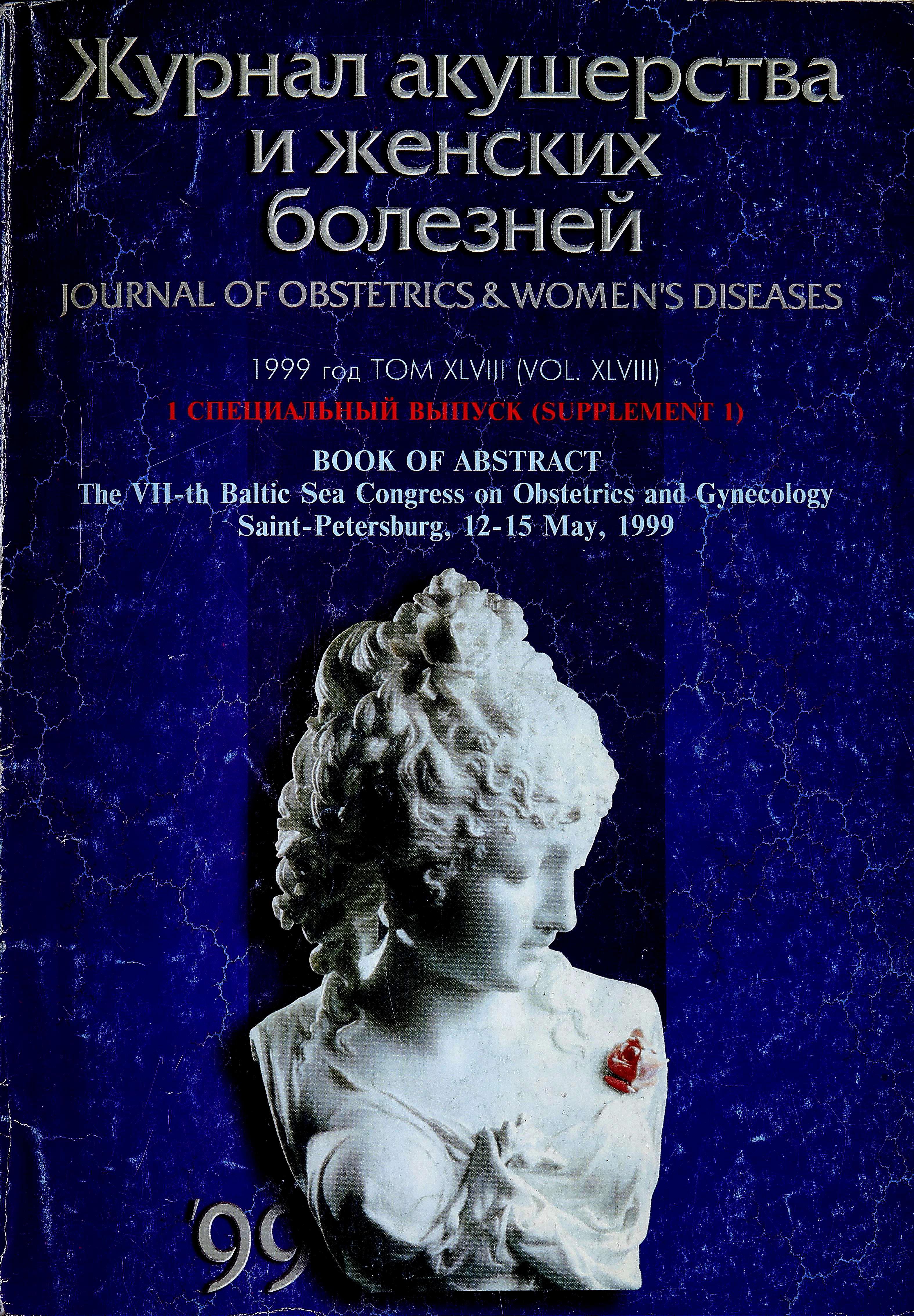The possibilities of improvement of post-partum contraception
- Authors: Chardikov A.V.1, Gazazyan M.G.1, Kenya A.N.1
-
Affiliations:
- Kursk State Medical University
- Issue: Vol 48, No 5S (1999)
- Pages: 51-51
- Section: Articles
- Submitted: 15.02.2022
- Accepted: 15.02.2022
- Published: 15.12.1999
- URL: https://journals.eco-vector.com/jowd/article/view/100825
- DOI: https://doi.org/10.17816/JOWD100825
- ID: 100825
Cite item
Full Text
Abstract
Objective: Our purpose was to improve the system of post-partum contraception in agricultural regions.
Full Text
Objective: Our purpose was to improve the system of post-partum contraception in agricultural regions.
Methods: Individual work on choice of a post-partum contraceptive method had been conducted during the pregnancy and after delivery among 250 women, residents of typical agricultural region of Central Russia.
Results: After delivery 7,5% of patients used surgical sterilization, 20,8% - intrauterine devices (IUD); 2,5% - hormone contraceptives, 54% - other contraceptive methods and 9,2% of parturient reject any contraceptives.
Surgical sterilization was carried out on 1-4 days after vaginal delivery via mini laparotomy under intravenous anesthesia without any immediate and remote complications. Insertion of IUD’s was performed on 5-7 days after delivery in absence of clinical, bacteriological, ultrasound and histological (in placenta) features of inflammatory pelvic diseases. Medical complications during I year after inserting IUD were registered in 3,6% of cases (2,4%) - inflammatory pelvic processes; 1,2% - menometrorrhagia. Progestogens (pills and injectables) were used as hormone contraceptives. Patients begun it’s use in 1 month after delivery. The related medical complications were metrorrhagia with the rate 2,9%. Developed system of post-partum contraception resulted in 4,5% reducing of frequency of unplanned pregnancy during the 1st year after delivery.
Conclusion: The developed system of post-partum contraception permits to reduce the frequency of unplanned pregnancy during the 1st year after delivery. However, the significant quantity of women, residents of agricultural regions are not ready yet to use modern contraceptive technologies (especially sterilization and hormones) in post-partum period and adopted other contraceptive measures or use no contraception at all, what led to high level of artificial abortions.
About the authors
A. V. Chardikov
Kursk State Medical University
Author for correspondence.
Email: info@eco-vector.com
Russian Federation, Kursk
M. G. Gazazyan
Kursk State Medical University
Email: info@eco-vector.com
Russian Federation, Kursk
A. N. Kenya
Kursk State Medical University
Email: info@eco-vector.com
Russian Federation, Kursk
References
Supplementary files







